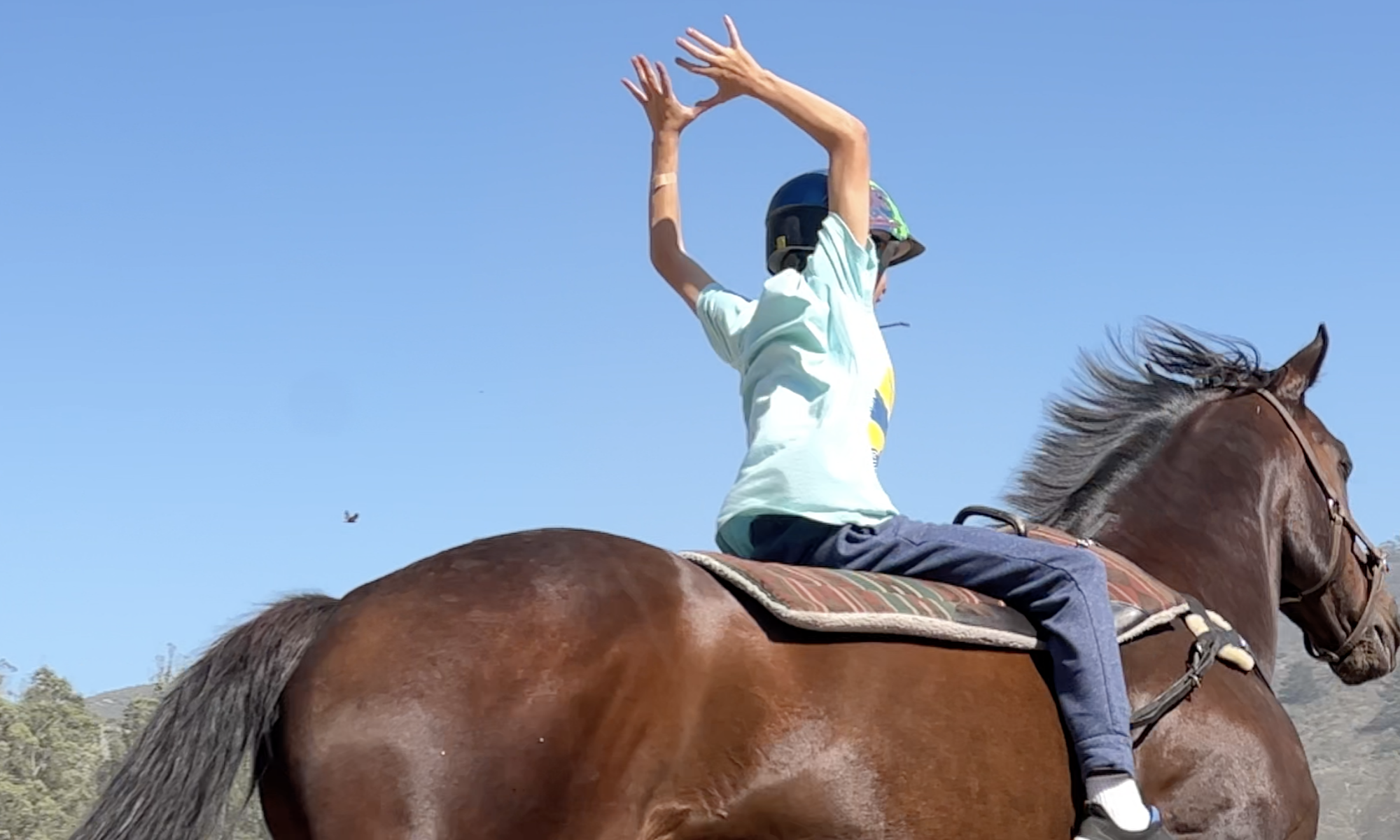Communication without connection is useless. But true connection finds ways to communicate that are surprising and delightful.

When Beeri’s family reached out to Square Peg Foundation asking if they would be able to start lessons in a year for their 5 year old son with cerebral palsy when they were in the United States, I was confused. Why would a family reach out to us so far in advance if they had never met us in person?
In early November 2019, I was riding my last horse for the day.
It was getting dark.
I was tired.
I hadn’t planned to stay this late.
And I was hungry.
A car pulled in to the barn. I sighed, dismounted my horse and walked him over to the parked car. A couple emerged, with two tiny kids both in car seats. While introductions played out, the air, light, and energy around all of us shifted into a space of joy and curiosity. And the connection between all of us was strong and exciting.
Their son Beeri, spoke only Hebrew and was still unable to walk. Beeri crawled on his hands and knees, face shining with interest towards the horses, not a care for the dirt and rocks under his hands and knees. His parents’ were chasing a dream in the US to help their son walk. They asked Square Peg to be part of their therapy regimen. I agreed.

Several times every week for the next eight months a combination of mom, dad, sister, and brother would venture out to the farm for rides on Mowgli or Hermes. On horseback we explored each trail and arena in the vicinity, often singing despite our language barrier.
Beeri taught me new words; a “Nahaal,” was created from digging in the dirt under the olive trees and letting the recent rain water flow. “Cal-ah-kavod,” was the most popular word during games with Gabriela and Mowgli, congratulating and exclaiming what a good job everyone was doing (it translates roughly to “good job”). “Aba,” was said with longing when Beeri decided he had been away from his dad for too long.

After half a dozen sessions we ventured out on the road trail unaccompanied by mom or dad. Riding together on Mowgli we did the whole 20 min path singing, humming, and dancing along to Hanukah classics. When we did make it back we were happy to see Aba, but went right into the arena to count, “Achat, shtayim, shalosh, canter!” This was the first time Beeri had been okay with the distance from his parents since before his surgery eight months prior. The freedom of movement and speed we were able to travel not only gave Beeri the giggles, but it fostered his independence through his horse friends.
After our ride the following week Beeri and his dad went into the tack room for lunch. Five minutes later, Dad walked out of the tackroom all smiles and brimming with enthusiasm, “I am going to my car!” He exclaimed with pride. “He told me he was fine to be by himself, this is the first time he has let me leave him truly alone for a few minutes since his surgery! (six months ago)”

Beeri’s strength and independence grew each week. While we rode we would teach each other words. “Yellow,” is “Tze-ov,” Mowgli’s color is, “chaum.” The sky is “cah-chall.” My pronunciation was poor, but Beeri saw that I was trying and he would laugh and say “no” or “yes” in his sweet way. Beeri knew I was trying to understand and that was all that mattered to him.
Beeri and I connected through the horses, through joy and curiosity. From the movement of the horse, Beeri began to make the complicated neural and muscular connections to begin to learn to walk. His parents felt like it was miraculous. But I feel like I was at the winning end of our relationship – because Beeri brought his smile, his willingness to try, his curiosity about the world and his patience in teaching me about his world.
Beeri and his family will be out of the country for some time due to visa constraints and our global health situation. While I dearly hope they will be back, I have no doubt that this beautiful family is spreading their joy and kindness to others on this planet we all call home.
Children like Beeri teach us that spoken language is only one way to communicate and that walking is only one way to travel the world. Beeri and his family reminded me how beautiful life can be when you are open to listening with with your whole self.















